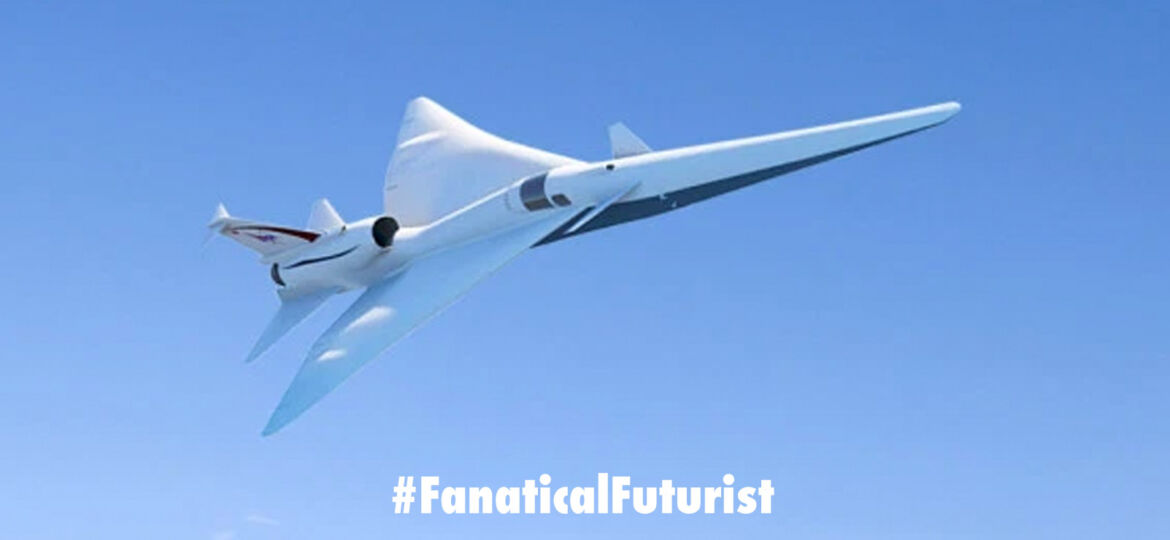
WHY THIS MATTERS IN BRIEF
Commercial supersonic flights ended last century after Concorde was cancelled, but Lockheed and NASA wants to bring it back and they’ve created a new X-Plane to do it.
 Interested in the Exponential Future? Connect, download a free E-Book, watch a keynote, or browse my blog.
Interested in the Exponential Future? Connect, download a free E-Book, watch a keynote, or browse my blog.
Concorde, the world’s first and only supersonic passenger plane, was a stunning feat of engineering in its day but it was eventually killed off because regulators would only let it fly supersonic over sea and not land because of the noise from its sonic boom, and that limited its commercial viability. In response to this a while ago NASA and Lockheed Martin teamed up with one another and began exploring ways to eliminate the sound of the sonic boom that plagued the Concorde’s existence. Now, after a couple of years of research and weird looking long nosed demonstrators NASA have announced that their new ultra-quiet supersonic X-plane is on a fast track to becoming a reality.
The plane, called the X-59, was greenlit for final assembly during a critical design review in 2019, and now NASA have commissioned Lockheed Martin to build the aircraft by the end of this year
“It’s moving very fast on the shop floor in terms of manufacturing and production,” the company said.

Courtesy: NASA
This follows a year of serious progress as the plane’s wings have been assembled at Lockheed Martin Skunk Works in Palmdale, California, and innovative systems for the craft continue to develop.
After the “mating of the aircraft and final assembly,” the representative said, “we’ll take the airframe to do some proof testing and get some other parts installed, do some test runs of the systems, and then roll it out, and once the plane is all together, it will take its first flight in 2021.”
But will a plane that travels at supersonic speeds, or faster than the speed of sound, really be quiet enough to avoid causing a major disturbance? According to the representative, the team behind the plane is confident that the craft will be ultrafast and ultra-quiet.
“We’re very confident. All kinds of modelling simulations and predictions align, so we believe, based on these models and simulations we’ve run, that it will achieve that low-boom sound once it reaches supersonic speeds.”
To ensure that this is the case and that the plane not only works correctly and reaches these incredible speeds, but also remains quiet enough to not be a public nuisance, additional testing will follow the completion of the plane in 2020.
As the Lockheed Martin representative explained, building the plane is really only Phase 1 of the entire project, with Phase 2, further testing, certifications and acoustic validation following soon after. Then after that, in the third phase the company will test the public’s response to it before making a final decision on whether or not to push it forward into commercial production.
According to a NASA statement, in the community response testing phase, “the team will fly the X-plane over select US communities to gather data on human responses to the low-boom flights and deliver that dataset to US and international regulators.”
So, who knows, are the days of supersonic passenger jets coming back? And even if they do then will they be able to compete with an entirely new type of air travel, hypersonic rockets courtesy of Elon Musk and SpaceX, who recently unveiled their own plans to transport people from one side of the planet to the other at speeds of up to Mach 27 in just half an hour? The race for speed, it seems, is accelerating.
Source: NASA
















